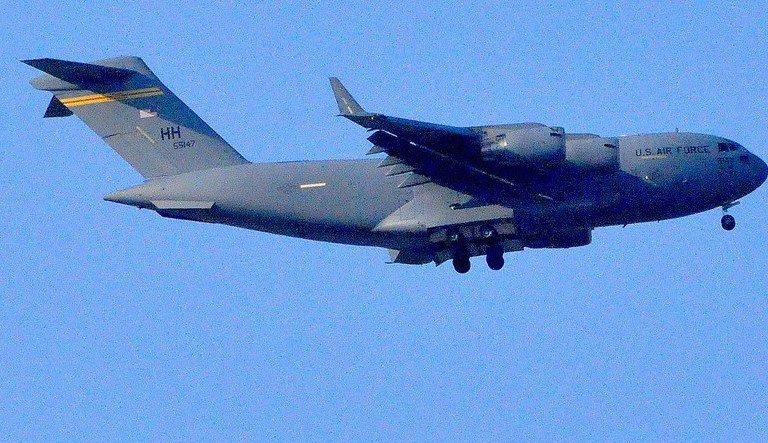Who’s Being Deported from the US and Why Trump’s Policies Are Targeting Migrants More Aggressively
In an ongoing effort to step up his anti-immigration drive, U.S. President Donald Trump has ramped up his mass deportation measures, sending military aircraft full of undocumented migrants back to their countries of origin. This recent development signals a more aggressive stance against illegal immigration since Trump’s return to office. On February 5, 2025, news surfaced that a U.S. military plane had been dispatched to India carrying deported migrants. But what does this mean for both the U.S. and the migrants involved?
Who Are the Migrants Being Deported?
Since President Trump’s return to power, the U.S. government has intensified its push to remove undocumented immigrants from the country. The deportations primarily target those who lack legal status—often people who entered the country illegally or overstayed their visas. This is especially true for Indian nationals who, despite having lived in the U.S. for years, find themselves facing removal.
As of 2022, an estimated 725,000 Indian nationals were part of the unauthorized immigrant population in the U.S. With around 20,407 of these individuals under scrutiny, the Trump administration has now focused its efforts on those who have final removal orders or are detained by ICE. A significant portion of this group is set to be deported in the coming months, according to the U.S. Department of Homeland Security.

So, who specifically is affected? At least 17,940 Indians are already under “final removal orders,” meaning their deportation is imminent. Another 2,467 are currently in ICE detention, awaiting their fate. As part of the latest wave of deportations, the first military flight from the U.S. to India carried around 200 undocumented Indians, a clear indicator of the administration’s determination to follow through on its anti-immigration promises.
The International Impact of Trump’s Deportation Tactics
One of the most striking elements of the current deportation effort is the use of U.S. military aircraft. Historically, deportations have been carried out using commercial airlines. However, the Trump administration has increasingly relied on military planes for these operations, a decision that has not gone unnoticed internationally. Countries receiving deported migrants have voiced their concerns over the practice, particularly about the conditions in which the deportees are transported.
For example, there was controversy when a Colombian president refused to allow a U.S. military plane to land on January 26. Meanwhile, many countries have raised objections about the use of handcuffs and chains for deported individuals, viewing it as inhumane treatment. This shift in deportation strategy also comes at a high cost. A recent flight to Guatemala, carrying 64 deportees, reportedly cost the U.S. government around $4,675 per migrant, a stark contrast to the cheaper commercial charter flights typically used.
The political and logistical fallout from these military flights has been significant. Foreign leaders are questioning the ethics of such practices, and local governments are facing increased pressure to cooperate with the U.S. on deportation matters.
The Rising Costs and Criticisms of Deportation Flights
It’s no secret that deporting large numbers of undocumented immigrants is an expensive endeavor. The U.S. government has already spent millions on the deportation effort, which is adding up quickly due to the high costs of military transport. A single flight carrying around 64 deported migrants to Guatemala in January was reported to have cost the U.S. at least $4,675 per individual.
This strategy, while ensuring faster deportations, has raised alarms about its sustainability. Critics point out that the financial burden could be better spent elsewhere, and that such aggressive deportation tactics often fail to address the root causes of illegal immigration in the first place. Yet, the Trump administration remains resolute in its push to remove undocumented migrants, viewing these expenditures as a necessary cost to secure U.S. borders.
How Trump’s Deportation Policies Have Evolved
Since President Trump re-entered office, his administration has doubled down on enforcing stricter immigration policies. Under the previous administration, deportation efforts slowed as the U.S. focused on other policy priorities. But with Trump back in the White House, the pendulum has swung the other way.
The Trump administration’s approach to immigration has largely been characterized by its tough stance against “illegal aliens.” Efforts to streamline the deportation process have been a major part of this agenda. The use of military flights signals an escalation of these efforts, targeting not only Mexicans and Central Americans but also Indian nationals who are caught in the web of illegal immigration enforcement.
While critics of the administration argue that these policies are harsh and dehumanizing, the Trump administration justifies its actions as necessary for national security. There’s a clear focus on reducing the number of illegal immigrants residing in the U.S. and sending a message that the government will not tolerate any violation of immigration laws.
Financial and Logistical Strain on the U.S. Deportation System
The costs of mass deportation are becoming a subject of debate within both political and economic circles. According to Reuters, the expenditure on military flights could reach exorbitant sums, especially with the additional costs of maintaining the fleet and the logistics involved. With commercial charters being phased out in favor of military flights, the financial burden on the U.S. taxpayer grows heavier.
It’s also important to note that this approach may face significant challenges down the line. International diplomatic relations are already being strained, and some foreign governments have been vocal in expressing their dissatisfaction with the U.S.’s methods. The use of military aircraft could further complicate these relations, especially in countries where immigration issues are a sensitive topic.
With both financial and diplomatic challenges mounting, it remains to be seen whether the Trump administration will continue to pursue this costly and controversial deportation strategy.
